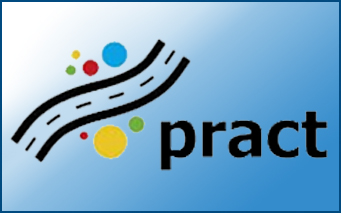
The 47th Annual ASECAP Conference (known as 47th ASECAP Information Days) took place on 29-31 May, 2019 in Costa Navarino, Messinia, in Greece. Given the disruptive nature of the technological developments of the last 10 years and the trends foreseen which will dramatically impact mobility, ASECAP’s Technical Program Committee issued an Open Invitation for Presentations in order to attract presenters in the very wide field of Development, Financing, Construction, Operation and Maintenance of Motorways and all related mobility fields and activities. ![]()
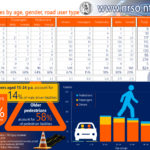
According to Hellenic Statistical Authority (ELSTAT) data, 824 persons were killed in Greece in 2016: 548 drivers, 127 passengers and 149 pedestrians. Male drivers account for 62% of all road fatalities in Greece. Young male drivers aged 15-24 years old account for 14% of all male driver fatalities and older people account for more than 58% of all pedestrian fatalities. The higher accident severity was found in accidents involving older persons (7.9 fatalities per 100 accidents) and 0-4 years old children (6.1 fatalities per 100 accidents). ![]()
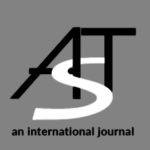
A paper titled “Road safety behavior of drivers with neurological diseases affecting cognitive functions: an interdisciplinary Structural Equation Model analysis approach” authored by Dimosthenis Pavlou and George Yannis is now published in Advances in Transportation Studies. This research suggests the evaluation of driving behavior by using multiple driving indexes in a combined integrated manner, through a large-scale driving simulator experiment, comprising medical/neurological and neuropsychological assessments of 225 active drivers, and a set of driving tasks for different traffic volumes, different driving environments, including in-vehicle distraction conditions. The statistical analysis methodology developed and implemented was based on Principal Component Analysis and Structural Equation Models (SEMs). SEM results indicated that the impact of neurological diseases affecting cognitive functions is significantly detrimental on the latent variables “driving performance” and on the observed variables “reaction time” and “accident probability”. The AD group had the worse driving behavior profile among the examined groups with neurological diseases affecting cognitive functions. ![]()

The European Transport Safety Council (ETSC) has published a briefing synthesis titled “EU Strategy for Automated Mobility”. ETSC warmly welcomes and fully agree with the Commission’s acknowledgement that when it comes to automated mobility, “only the highest safety and security standards will suffice”. This must remain the guiding principle in the years to come. Automated driving has the potential to significantly improve road safety. However, recent collisions involving vehicles with automated technology on board demonstrate that automated driving may also pose new risks to road safety, and that the technology is not yet mature. ![]()
![]()
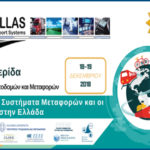
The 4th Conference on Intelligent Transportation Systems and related developments in Greece, which was organised by ITS Hellas, took place with great success in Athens, on 18-19 December 2018. The aim of the conference was to discuss the broad deployment of Intelligent Transport Systems (ITS) as a tool to achieve economic growth and prosperity and ensure the effectiveness, efficiency and safety of transport for the benefit of the respective industry, the end-users and the environment. ![]() NTUA actively contributed with the following presentation:
NTUA actively contributed with the following presentation: ![]() Telematics for Safe, Green and Smart Driving: The BeSmart Project
Telematics for Safe, Green and Smart Driving: The BeSmart Project

At the end of another year full of scientific excellence and innovation and great achievements, like the new breakthrough Road Safety Decision Support Systems: SafetyCube, SafeFITS, AfricaRSO, we persist with creativity and passion for a brighter, more automated and safer traffic future everywhere and for all.
We thank you all for the excellent cooperation and we are sending you our very best wishes for joyful Christmas holidays and a lucky and fruitful new year 2019, plenty of personal and professional achievements. ![]()

Within the framework of the Horizons 2020 project SaferAfrica (African-European Dialogue Platform on Road Safety) a webinar titled “Road Safety Data in Africa” was successfully organised with the active contribution of NTUA, on December 20th, 2018. This webinar addressed key findings from a review on road safety data collection systems and definitions in African countries, together with the respective recommendations and guidelines for a minimum set of harmonised data collection procedures and standard definitions. In addition, the results of the analysis of key road safety data and risk factors in Africa were highlighted. ![]()
![]()
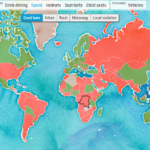
The World Health Organisation (WHO) published an Interactive Map on Global Road Safety, based on the recently published Global Status Report on Road Safety 2018. This Interactive Map is a highly useful tool allowing to visualize a wealth of information and several road safety parameters per country as well as to highlight the shocking fact that every 23 seconds a road user looses their life. ![]()

The World Health Organization (WHO) has published the 10 key facts on global road safety as derived from the recent Global health estimates and the Global status report on road safety, published in 2018. The first fact is that “Road traffic injuries are a global public health problem“. To reduce the number of road traffic deaths and injuries, a holistic framework such as the Safe System Approach needs to be adopted to ensure a safe transport system for all road users. ![]()
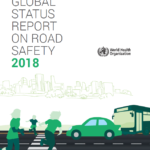
The Global Status Report on Road safety 2018 has been published by World Health Organisation (WHO) with the active contribution of NTUA, in December 2018, highlighting insufficient progress as the number of annual road traffic deaths has reached 1.35 million. Road traffic injuries are now the leading killer of people aged 5-29 years. The report suggests that the price paid for mobility is too high, especially because proven measures exist. These include strategies to address speed and drinking and driving, among other behaviours; safer infrastructure like dedicated lanes for cyclists and motorcyclists; improved vehicle standards such as those that mandate electronic stability control; and enhanced post-crash care. Drastic action is needed to put these measures in place to meet any future global target that might be set and save lives. ![]()
![]()
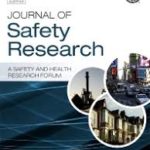
The Journal of Safety Research announced a call for papers: Special issue – Safety, human factors and technology. The objective of this Special Issue is to support the discussion on the future trends of mobility and the implications for the protection of all road users. An important aspect is that technological developments must go hand in hand with users’ acceptance and behavior. Therefore, we are particularly interested in contributions addressing the following topics: The role of human factors and technology on road safety; Interactions between vulnerable road users and automated systems; How can road users influence the technology advancement in transportation. ![]()
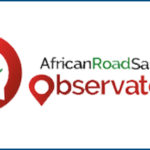
The African Road Safety Observatory is now on line constituting a space for interaction to highlight the road safety needs in African countries, developed with the active contribution of NTUA. It is one of the main results of the SaferAfrica project funded by the European Commission Horizons 2020 Programme and includes various knowledge and tools, such as statistics, reports, fact sheets, knowledge resources and links and it is integrated with crowd-sourcing functions to facilitate the participation of experts and end-users, through an interactive Dialogue Platform. ![]()

A paper titled “Identification of patterns of driver speeding behaviour and safety margins from tangent to curve” authored by Eleonora Papadimitriou, Stergios Mavromatis, Dimosthenis Pavlou and George Yannis is now published in Advances in Transportation Studies. This paper presents a novel definition of drivers’ safety margins reflected in speed profiles on a tangent to curved road design. These safety margins are based on a vehicle dynamics model, which is implemented to assess the speed variation at impending skid conditions from tangent to curve on the basis of several parameters. Data from a driving simulator experiment are used to test the proposed methodology, explore driver’s speed profiles and the parameters affecting drivers’ safety margins. The results suggest that drivers’ safety margins towards the examined curve are considerable, with the majority of the drivers using less than 55% of the available vehicle engine power. ![]()
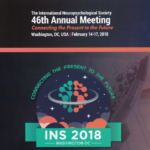
The International Neuropsychological Society organised the 46th Annual Meeting which took place with great success in Washington, DC from February 14-17, 2018. The topics of the Meeting include clinical neuropsychology, cognitive neuroscience, and neuropsychiatry and internationally renowned, innovative, and pioneering scientists and clinicians from multiple disciplines gave very interesting presentations. NTUA actively contributed with the following interdisciplinary presentation merging two scientific domains – neuroscience and road safety: ![]() Predictors of Accidents in Patients with Mild Cognitive Impairment, Mild Alzheimer’s Disease and Healthy Controls in Simulated Driving
Predictors of Accidents in Patients with Mild Cognitive Impairment, Mild Alzheimer’s Disease and Healthy Controls in Simulated Driving

UNECE and the Ministry of Economy and Sustainable Development of Georgia organised a Workshop titled: “National Road Safety Policy development – trends and challenges| which was held with great success in Tbilisi, Georgia on 13-14 November 2018. The aim of the workshop was to strengthen the knowledge of Central Asia, Caucasus and East-Europe countries on how to define national road safety policy and improve road safety situation. As such, the workshop helped participants to better understand international and regional best practices on road safety management, collection and utilization of robust and reliable road safety statistics and tools (SafeFITS, and RSPR) and methodologies for setting up road safety strategic goals. ![]() NTUA actively contributed with the following presentations:
NTUA actively contributed with the following presentations:

On the occasion of the World Day of Remembrance for Road Traffic Victims, the European Commission presented the final Road Safety Figures for 2017, which show for the second year in a row a decrease by 2% of road fatalities in the EU compared to the previous year. European Coordinator for Road Safety Matthew Baldwin said: “Whilst European roads are the safest in the world, the downward curve has flattened out in past years. We still have many challenges ahead of us: I especially think of vulnerable road users, who– as the figures show- are making up a larger share of the casualties, especially in urban areas. We need an active, cooperative, holistic approach amongst all stakeholders to implement what we know needs to be done – the Safe System“. ![]()
![]()
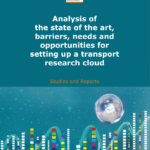
The European Commission’s Directorate-General for Research and Innovation published a Report titled “Analysis of the state of the art, barriers, needs and opportunities for setting up a Transport Research Cloud”, with the active contribution of NTUA Professor George Yannis. This Report focuses on the requirements for data sharing within the transport research community. In particular, the Report examines the potential of a Transport Research Cloud (TRC) as a subset of the European Union’s European Open Science Cloud (EOSC) initiative. Six domain experts collected data based on their personal experiences, contacts, prior research and a survey sent out to other researchers in the transport domain to enable a preliminary analysis concerning the needs, barriers and potential benefits for the domain should a TRC be realized. Road Safety constitutes a major component of this Transport Research Cloud. ![]()
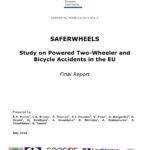
The European Commission’s Directorate General for Mobility and Transport (DG Move) published the Final Report of the “Study on powered two-wheeler and bicycle accidents in the EU, SaferWheels”, with the active contribution of NTUA. The SaferWheels study was conducted to investigate accident causation for traffic accidents involving powered two-wheelers and bicycles in the European Union. The objective of the study was to gather PTW and bicycle accident data from in-depth crash investigations, obtain accident causation and medical data for those crashes, and to store the information according to an appropriate and efficient protocol enabling a causation-oriented analysis. ![]()

The International Transport Forum (ITF/OECD) published recently a new Report: “Safer City Streets: Global Benchmarking for Urban Road Safety”, with the active contribution of NTUA. This document aims to support cities in setting road safety targets and to monitor progress in improving urban road safety. Pedestrians, cyclists and motorcyclists account for nearly 80% of urban traffic fatalities. Cities should thus intensify efforts to improve the safety of vulnerable road users. This document presents traffic safety indicators for different road user groups collected in 31 cities worldwide to facilitate the evaluation, monitoring and benchmarking of road safety outcomes. It places a particular attention on measuring the risk of fatality per unit distance traveled. ![]()
![]()

The European Transport Safety Council (ETSC) has launched a new campaign “Last Night the EU Saved My Life”. The EU has the exclusive authority to set minimum safety standards for all new vehicles sold on the EU market. EU crash safety tests, and mandatory inclusion of technologies such as seat belt reminders and Electronic Stability Control have saved thousands of lives. The revision of the “General Safety Regulation”, published on 17 May 2018, includes a set of new vehicle safety measures, including mandatory installation of new driver assistance technologies, as well as revised minimum crash testing standards and measures to protect pedestrians and cyclists. But the new legislation now needs the support of Members of the European Parliament and the Member States of the European Union in order to be passed into law, and that’s why ETSC has launched this new campaign with the active support of NTUA. ![]()
![]()

UNECE celebrates the 50th anniversary of Vienna Conventions on Road Traffic and on Road Signs and Signals, 1968-2018. At the turn of their 50th anniversary, the Vienna Conventions on Road Traffic and on Road Signs and Signals from 1968 are more relevant than ever. Whether helping to address the most critical road safety needs, or facilitating the development of automated driving functionalities, reference to these legal texts, which are evolving with technological developments, is a necessity for countries around the world. The two Conventions have a global scope and are important frameworks facilitating international road traffic through uniform traffic rules and harmonized road signs, signals, symbols and markings. ![]()
![]()

The 2018 Polis Conference on “Transport innovation for sustainable cities and regions” took place with great success on 22 and 23 November 2018, in Manchester, UK, organised by POLIS, the European Cities Network. The conference provided an opportunity for cities, metropolitan areas and regions to showcase their transport achievements to a large audience, and for the wider transport community to engage with representatives of local and regional authorities on innovative transport solutions. Road Safety was one of the key areas of the Conference, as is also the subject of the special joint POLIS–ITF workshop titled: From Safety Data to Safer City Streets. The 2018 Polis Conference was the most successful edition ever, with a record number of 550 participants. In 2019, the annual event will return to Brussels, and will celebrate the network’s 30th anniversary. ![]()
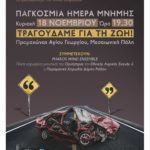
The World Day of Remembrance for Road Traffic Victims is observed on the third Sunday of November each year (this year on 18 November 2018) by an increasing number of countries on every continent around the world. From 1995, the European Federation of Road Traffic Victims (FEVR) observed this day, as European Day of Remembrance, that was adopted by the United Nations in 2005, and is dedicated to remembering the many millions killed or injured in road crashes and their families and communities, as well as to pay tribute to the dedicated emergency crews, police and medical professionals who daily deal with the traumatic aftermath of road death and injury. The Alliance’s social campaign for World Day of Remembrance 2018 includes both global and local elements. ![]()
![]()
![]()
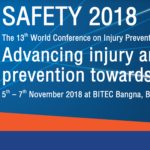
The 13th World Conference on Injury Prevention and Safety Promotion (Safety 2018) took place with great success on 5-7 November 2018 in Bangkok, Thailand. The Conference was hosted by Thailand’s Ministry of Public Health, and co-hosted by the World Health Organization (WHO), the National Institute for Emergency Medicine (NIEM) and the Thai Health Promotion Foundation. The 13th World Conference on Injury Prevention and Safety Promotion brought together over 1000 of the world’s leading researchers, practitioners, policy-makers and activists to share information and experiences and to discuss solutions. Conference major theme was “Advancing injury and violence prevention towards SDGs”. ![]()

The Austrian Presidency of the Council of the European Union, the Austrian Federal Ministry for Transport, Innovation and Technology, the Austrian Road Safety Board (KFV) and the European Transport Safety Council (ETSC) organised a high level road safety conference which took place with great success in Vienna on 13 November 2018. The conference featured a high level panel debate “Road safety 2020+: Challenges in Human Factors, Vehicles and Infrastructure”. Conference participants discussed priority measures and actions of the upcoming EU and national road safety strategies with politicians, experts, researchers, NGOs and representatives of the EU institutions. ![]()

The American College of Greece – Institute of Public Health organized with great success a workshop on “Road Accidents and Safe Traffic Behaviour: Are they prevented or are they just cured?” on 14 November 2018 in Athens, Greece, with key note speakers NTUA Professor George Yannis and NKUA Em.Professor George Baltopoulos. ![]()

Ethos Events in collaboration with the financial and business portal banks.com.gr and the magazine CHRIMA organized with great success the 2nd Auto Forum titled: “Change your car!” on 7 November 2018 in Athens. The focus was on the latest technological advances in the field of passive safety in the automotive sector and the need for consumers to understand the potential of the new technology in order to “escape” untouchable or at least slightly injured after a violent collision caused by a traffic accident. ![]()
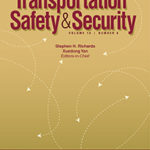
A paper titled “Which factors affect accident probability at unexpected incidents? A structural equation model approach” authored by Panagiotis Papantoniou, Constantinos Antoniou, George Yannis and Dimosthenis Pavlou is now published in Journal of Transportation Safety & Security. A driving simulator experiment was carried out, in which 95 participants were asked to drive under different types of distraction (no distraction, conversation with passenger, cell phone use) in different road and traffic conditions. Then, in the framework of the statistical analysis, driving performance is estimated as a new unobserved (latent) variable based on several individual driving simulator parameters while a structural equation model is developed investigating which factors lead to increased accident probability at unexpected incidents. Regarding driver distraction, results indicate that cell phone use has a negative effect on accident risk confirming the initial hypothesis that when talking on the cell phone drivers find it difficult to handle an unexpected incident and as a result are more likely to commit an accident. ![]()
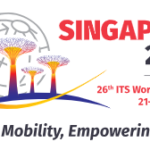
Under the theme “Smart Mobility, Empowering Cities“, 26th Intelligent Transport Systems World Congress, the world’s leading transport technology congress, took place in Singapore on 21 – 25 October 2019, organized by Land Transport Authority (LTA), Intelligent Transportation Society (ITS) and co-hosted by ERTICO – ITS Europe together with ITS America, ITS Asia. With a comprehensive format of plenary and interactive sessions, as well as a dynamic exhibition with technical demonstrations and tours, the World Congress 2019 was an opportunity for our sponsors and partners to network, discuss and share ground-breaking transport technology, and forge mutually beneficial partnerships to further unleash the power of ITS. ![]()
![]()

ERTICO – ITS Europe , in co-operation with the European Commission organised the 13th ITS European Congress, which was held in Eindhoven, on 3-6 June 2019, was hosted by the Municipality of Eindhoven and Municipality of Helmond. The ITS Congress in Europe, is the largest event entirely dedicated to smart mobility and digitalisation of transport. ![]()


















































































